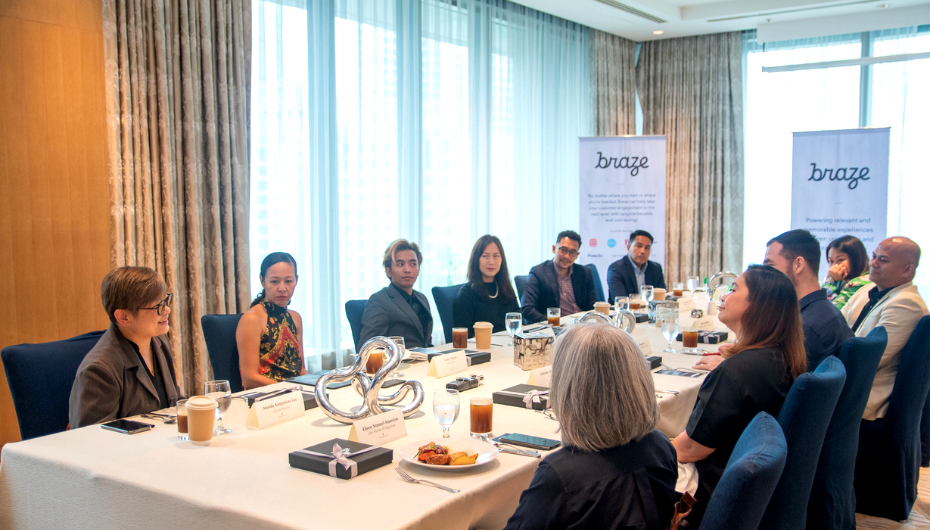
Challenges in getting a 360-degree customer view right
share on
The marketing and communications landscape in the Philippines is seeing a lot of change, from digital integration to major media disruptions, as well as influencers raising the bar for brands to be more accountable and trustworthy.
These changes have highlighted the importance for brands and marketers in the country to have a 360-degree customer view so that they can better understand their needs, build a stronger engagement with customers, and retain their loyalty.
A 360-degree customer view enables brands to aggregate all customer data from various touch-points of a customer’s engagement, with the goal of being able to get the right insights, and tailor their offerings to meet the needs of each customer.
The feasibility of achieving full 360-degree customer clarity – whether it’s a pipe dream that may not be attainable or if we only need pieces of information about the customer to make the right decisions – was a key point of discussion during MARKETING-INTERACTIVE’s recent round table session, organised jointly with Braze.
How to get more insights from your data
Building a customer 360-degree portfolio requires the collection of data from every customer touch-point to get a unified view of the customer. This includes information about the customer’s transactions with the business, such as purchase history, payment information, and order details.
However, transactional data alone is not enough, said Albet Buddahim, chief marketing officer, Primer Group of Companies.
“Transactional data is easy to capture, but do we know what drove the purchase? If someone is flying on Philippines Airlines, do we know if he was on business or visiting a relative?”
“The 360 view is about getting visibility on the context of a purchase or a preference. Sometimes I accompany my wife to Landers, but Landers has no visibility of me. That’s the challenge – we need to know what drove the customer to come in the first place.”
Brands must also take the further step in going beyond transactional data and do a predictive analysis, pointed out Buddahim, which is an area IT can help.
“When you do analysis, you find the drivers, opportunities, and gaps. The transactional data doesn’t give you that.”
Julia Lee, vice president of Braze, said IT is key in breaking down silos and bridging the gap between marketing and product.
“We are in a world where you have to earn the trust and the respect and the permission of the consumer. I think respecting that and then using technology to help break down the silos becomes key.”

The use of data and analytics, she explained, can “activate a new use case or a new experience, areas that are meaningful in our customer outreach and follow up engagement” and enable brands to deliver a more powerful customer experience. However, Lee also reiterated that the technology cannot be used effectively if it doesn’t address the needs of the customer.
“Technology keeps evolving, but is the customer really at the heart of it? Is there a strategy within your own companies where you are actively collecting first party relationships, because when you own that, you can then engage properly.”
Braze’s recent 2023 Global Customer Engagement Review (CER) study, which polled 1,500-plus global marketing decision makers in 14 countries, including the Philippines, on the changes in customer engagement trends, revealed that 36% of marketers rank collecting, integrating, managing, and accessing data as their top challenge with customer engagement.
The study also found that when brands lack a thoughtful data management strategy, they often find they cannot gather or act on real-time insights – and struggle to turn them into revenue-driving consumer experiences. That challenge can have a significant impact on overall performance.
Challenges in data management and skill sets
Brands often have too much data and many lack the ability to use it effectively. According to the CER study, 80% of marketing decision makers surveyed cite they are collecting too much data, resulting in information they can’t use effectively.
Among other challenges, 25% of marketers in the Asia Pacific added their customer engagement is owned by non-marketing teams such as the IT or product department; another 42% said they work with internal data scientists who don’t understand marketing priorities; and a further 38% acknowledged their teams are not equipped with the right data skills.
The advent of technologies such as mobile devices, video, online communities, and social media have increased the touch-points with which customers may interact with the brand, making the task of aggregating data more difficult than ever.
There is also the need to ensure that the data collected is not fragmented and inconsistent as it is usually stored across different systems.
“Firstly, when you try a new channel, like a web app or social media, does the organisation internally allow the data to be effectively collected and analysed. Secondly, how do we capture intentions or know if this is a real or an anonymous user? How can we activate the data in a way that is meaningful?” Lee asked.
Marketing means nothing without trust and accountability
While brands are under pressure to raise their game, trust and quality remain a critical factor in winning and retaining customers.
“If you are a creator, your brand is technically your business. So, if you're pushing products that aren't really good, that means you're killing your brand too,” said Tryke Gutierrez, chief executive officer of Tier One Entertainment.
There are also different ways for a brand to build trust.
“Once people see a certain brand working with a certain influencer, for example, that trust can be built, because the community that follows them knows that they won’t like or recommend something just in exchange for money. I think that's something that’s also changing the engagement landscape,” Gutierrez added.
Do we really need a 360-degree customer view?
Instead of pushing the boundaries on collecting as much available data as possible, speakers at the round table agreed that collecting data from every customer touch-point may not be practical, and too costly an investment. While a customer 360 view can serve as a reference, brands ultimately must focus on how their organisations are creating value for customers.
“Experience has taught me that it may not be necessary to have a complete 360 view,” said Eileen Manuel-Asuncion, the group head for commercial venture and the former group head of marketing at Del Monte.
“We did a survey with consumers where they had to fill three pages about their cooking habits, what they use, etc, and found that there were probably three to five pieces of information that were useful for us. We found that they were nice to know, but we didn't need all of them.”
Added Primer Group’s Buddahim: “We don’t need a 360 view and we don't need too much data. What’s more important is finding out what really drives and triggers a purchase.”
This post was written in collaboration with Braze.
share on
Free newsletter
Get the daily lowdown on Asia's top marketing stories.
We break down the big and messy topics of the day so you're updated on the most important developments in Asia's marketing development – for free.
subscribe now open in new window
